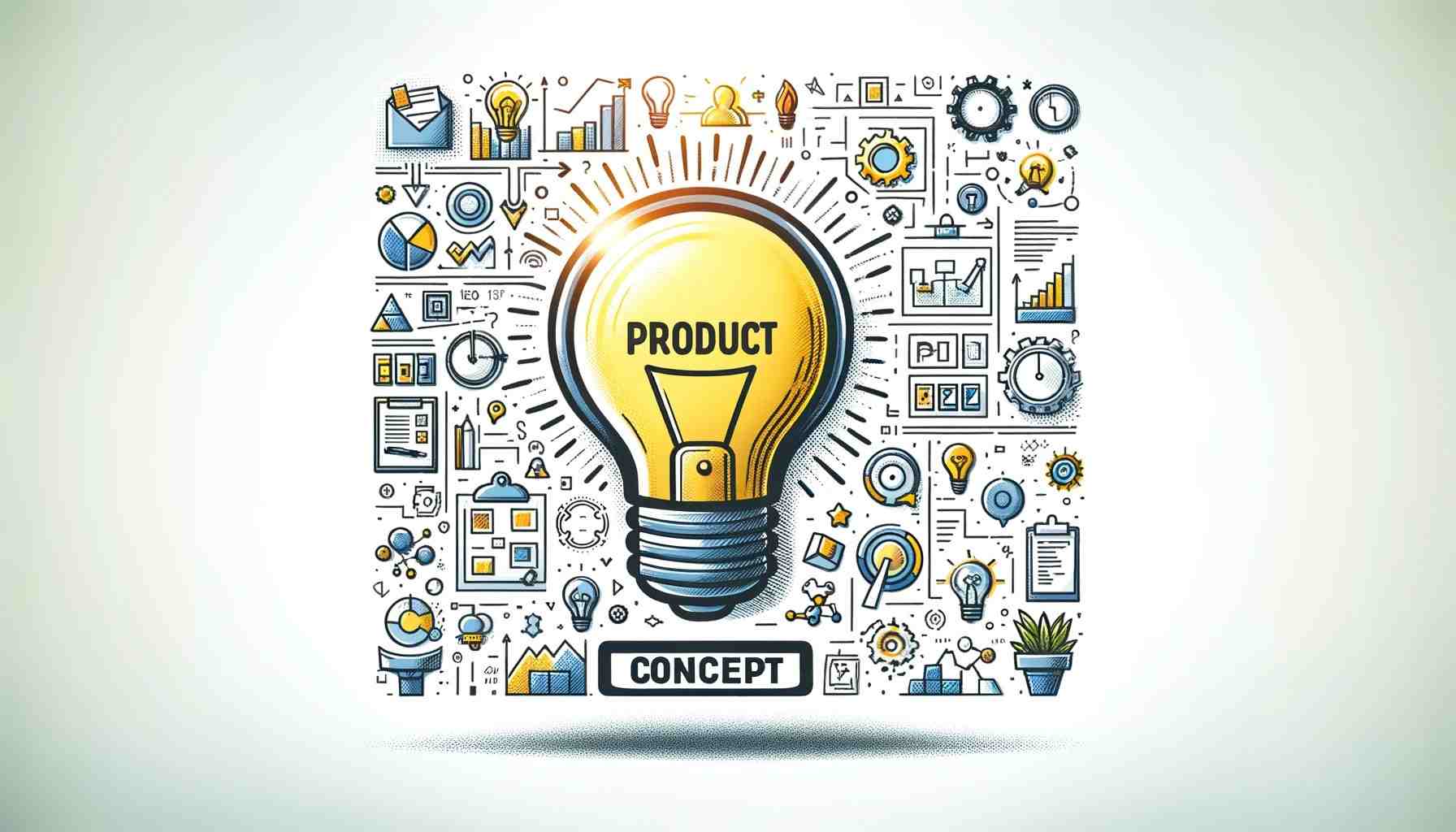
Companies need to clearly understand their product concept in today’s competitive business environment. The product concept, which includes its characteristics, benefits, and target markets, is a general idea or vision for the products. To achieve greater market success, companies can provide for an alignment of their product with customer needs and preferences through the definition of a marketing concept. In this article, we will discuss the product concept, its importance, key elements, steps for writing the product concept, and future trends.
What are the key elements of a product concept?
- Unique Selling Proposition (USP): This sets the product apart from competitors and highlights its value to customers.
- Target Market: Identifying the specific customer group for which the product is designed is crucial for effective marketing and sales.
- Features and Benefits: Clearly outlining the product’s features and benefits helps customers understand how it can meet their needs.
- Brand Identity: The product concept should be aligned with the company’s overall brand identity to maintain consistency and credibility.
- Market Research: Conducting thorough market research to understand customer preferences and trends is essential for developing a successful product concept.
Importance of product concept
It helps companies to ensure that their product meets the needs and expectations of their target market in the first place. Companies can develop products more likely to succeed in the market if they understand what their customers want and need.
In addition, a clearly defined product concept can guide all aspects of product development, from design to marketing. It is designed to help ensure all efforts align with the common goal and lays down a roadmap for decisions.
In addition, companies can differentiate themselves from competitors by developing a clear product concept. By highlighting the unique characteristics and benefits of their products, companies can stand out in the market and attract more customers.
Steps to Develop a Winning Product Concept
1. Conduct Market Research
- Identify Needs: Understand the target market’s needs, preferences, and pain points.
- Analyze Competitors: Study competitors’ products and market positioning.
2. Brainstorm Ideas
- Collaborative Sessions: Engage cross-functional teams to generate diverse ideas.
- Customer Feedback: Incorporate insights from potential users.
3. Define the Concept
- Core Features: Outline key features and benefits of the product.
- Value Proposition: Clearly articulate the unique selling points (USPs).
4. Create a Prototype
- Initial Design: Develop a basic model or mockup of the product.
- Iterate: Refine the prototype based on feedback.
5. Test the Concept
- Focus Groups: Conduct sessions to gather detailed feedback.
- Surveys and Interviews: Use quantitative and qualitative methods to validate the concept.
6. Refine the Concept
- Address Feedback: Make necessary adjustments based on user feedback.
- Enhance Features: Improve features to meet market needs better.
7. Develop a Business Plan
- Cost Analysis: Estimate production, marketing, and distribution costs.
- Revenue Model: Define pricing strategy and revenue streams.
8. Secure Funding
- Pitch to Investors: Present the concept and business plan to potential investors.
- Crowdfunding: Consider platforms like Kickstarter for initial funding.
9. Finalize Design and Production
- Detailed Design: Complete the final design and technical specifications.
- Manufacturing Plan: Establish a plan for production and quality control.
10. Launch the Product
- Marketing Campaign: Develop a comprehensive marketing strategy.
- Distribution Channels: Ensure product availability through appropriate channels.
11. Monitor and Improve
- Customer Feedback: Continuously gather and analyze feedback post-launch.
- Iterate: Make ongoing improvements to enhance the product’s success.
By following these steps, businesses can develop a product concept that meets market demands and stands out in a competitive landscape.
Trends in Product Concept Development
1. Sustainability
Incorporating eco-friendly materials and processes is becoming a core focus in product development. Companies are increasingly prioritizing sustainability to meet consumer demands and regulatory requirements.
2. Personalization
Customization options are trending, with products tailored to individual consumer preferences through advanced data analytics and AI technologies.
3. Integration of AI and IoT
Product concepts leverage AI and IoT for smart features that enhance user experiences, offering greater functionality and connectivity.
4. Health and Wellness
Products promoting health and wellness, including wearable tech and fitness gadgets, are gaining traction, reflecting a growing consumer interest in personal well-being.
5. Augmented Reality (AR)
AR is being used to enhance product visualization and user interaction, providing immersive experiences that help consumers make informed decisions.
6. Circular Economy
Emphasis on designing products for reuse, recycling, and minimal waste, supporting a circular economy that reduces environmental impact.
7. Minimalist Design
A shift towards minimalist and functional design that emphasizes simplicity and usability, appealing to modern consumer aesthetics.
8. Rapid Prototyping
Advanced 3D printing and rapid prototyping techniques accelerate product development cycles and allow for quick iterations based on feedback.
9. Cross-Industry Collaboration
Increased collaboration between industries to combine expertise, create innovative products that meet diverse needs, and open new markets.
10. Digital Transformation
Leveraging digital tools and platforms to streamline product development processes, from concept generation to market launch, improving efficiency and collaboration.
Sum Up
Overall, a successful product is based on a product concept. Companies can create products that satisfy their customers’ needs, distinguish themselves from competitors, and ultimately become successful in the market if they define the essential elements of a product concept and comprehend its importance.
